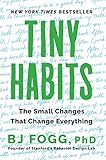Habits are the automatic actions, both positive and negative, you take through your life. Atomic Habits describes how to change habits, it’s the how-to manual for “Sharpening the Saw”.
Big Ideas
Systems more important than goals
Goals are point in time, systems are like the drip, drip, drip of daily improvement. Hi reps, low weight. Habit stacking Systems drive input KPIs. Output KPIs lag input KPIs. An easy way to say this is “Compensation lags competence”
Habits in context
Your identity re-enforces your habits, which in turn creates your outcomes.
- Identity
- Habits
- Outcome
Habit model
Let’s go back to that other idea: How a habit is formed.
| State | Description | Negative | Positive |
|---|---|---|---|
| Cue | Thing that kicks off the thought | Hang with friends | Sit on Mediation Bench |
| Craving | The desired state | Relaxed Buzz | Calm mind/being a meditator |
| Response | The action, aka habit | Drinking the beer | Meditating |
| Reward | Achieving the desired state | Being Buzzed | Being Calm/Feeling like a meditator |
Another habit I have is playing on the command line (both writing and updating my shell)
| State | Actions |
|---|---|
| Cue | Opening blink |
| Craving | Be a command line guru/writer |
| Response | Playing with command line/blog |
| Reward | Feeling like a command line guru/writer |
Changing habits
| State | Adding | Removing |
|---|---|---|
| Cue | Make it obvious and visible | Make it invisible |
| Craving | Make it attractive | Make it unattractive |
| Response | Make it easy | Make it hard |
| Reward | Make it satisfying | Make it unsatisfying |
Encouraging more magic
| State | Actions |
|---|---|
| Cue | Seeing kids/being bored |
| Craving | The feeling of smoothness of magic |
| Response | Carry a fanny pack with everything in it |
| Reward | Thinking how much people will enjoy magic |
Behavior change model map
Tiny habits has a simpler behavior change model, mapping it
| Tiny Habit | Atomic Habit |
|---|---|
| Prompt | Cue |
| Ability | Response |
| Motivation | Craving, Reward |
Creating new Cues
You need to make the cue obvious, and there are two ways:
- Set a date and time intention
- Tie it to another habit.
Working backwards - Who do you want to be
Think about the habits that the person you want to be. What habits will they have? What habits will they not have, then tackle that.
The change cycle: Plan; Execute; Audit; Adjust
Tiny Habits
Designing for behavior change
You’ll only act with a prompt (Cue), but your likelihood of taking action is dependent on your ability and motivation.
When making change, motivation is hardest to change, and wanes the most, so tackle prompt first, then ability, and lastly motivation.
Add table, prompt, ability, motivation
Prompt, Ability, Motivation.
TODO: Contrast this with the Be Proactive, which focus on motivation, not prompts and motivation
Start by Prompt,

